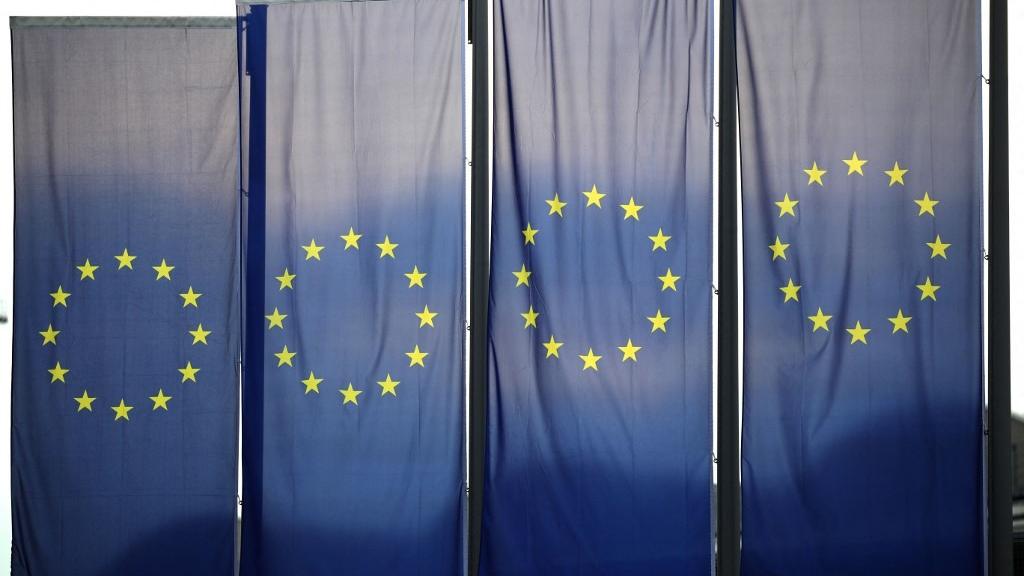 Flags of the European Union flutter in front of the headquarters of the European Central Bank (ECB) in Frankfurt am Main, Germany, on March 10, 2021. (ARMANDO BABANI / AFP)
Flags of the European Union flutter in front of the headquarters of the European Central Bank (ECB) in Frankfurt am Main, Germany, on March 10, 2021. (ARMANDO BABANI / AFP)
Europe’s car and construction sectors could face rising costs if they fail to substantially reduce their carbon footprint.
European Union leaders will gather in Brussels for a special session on May 25 to discuss how to achieve the bloc’s collective 2030 target of cutting harmful greenhouse emissions by at least 55 percent compared to 1990 levels. Binding national targets are among the sticking points.
The EU’s executive arm is mulling creating an additional system of pollution-cutting incentives known as emissions trading for buildings and road transport, according to a document distributed to diplomats in Brussels before the summit. The aim of this new program would be to provide “an additional incentive to actors in these sectors to take additional action, thereby contributing to emission reductions in all member states.”
The planned gradual introduction of tailor-made greenhouse-gas trading systems for housing and transport would come on top of carbon caps for utilities and manufacturers in the existing EU Emissions Trading System (ETS). It would not interfere with the carbon price in the current ETS, the EU said
The April 23 memo doesn’t say whether drivers and home owners, or the car industry and construction companies, which will be on the hook to purchase permits for their emissions.
The planned gradual introduction of tailor-made greenhouse-gas trading systems for housing and transport would come on top of carbon caps for utilities and manufacturers in the existing EU Emissions Trading System (ETS). It would not interfere with the carbon price in the current ETS, the commission said
EU carbon permits - certificates allowing the emission of a certain amount of carbon dioxide or other greenhouse gases - reached a new record of 47 euros (US$56) per metric ton last week, and analysts expect they will keep rising as the 27-nation bloc introduces ever tougher climate rules. Prices will more than double by the end of the year to 110 euros per ton, Berenberg economists led by Lawson Steele wrote in a note last month.
ALSO READ: Organic farming must grow to reach green goals, EU says
Morgan Stanley predicted that prices could exceed 60 euros driven by a reform of the emissions trading system in June.
The world’s biggest ETS covers 40 percent of the EU’s total emissions. The rest come from sectors that fall outside its scope, including agriculture and land use, waste, road transport and buildings. Raising the level of ambition in these sectors is likely to prove contentious, as poorer members especially say they cannot afford the costs of the higher goals.
Bloc members would have to collectively cut emissions by an additional 10 percentage points beyond the current target, national delegations were told in the memo prepared by the European Commission and seen by Bloomberg. On top of the higher costs for polluting, the commission will propose tougher minimum CO2 standards for new vehicles, and stricter energy efficiency requirements for buildings, according to the memo.
READ MORE: EU countries back binding green farming schemes
The debate among EU leaders comes after the US and the UK unveiled more ambitious emissions-reduction targets for 2030, during a climate summit hosted by President Joe Biden last week. On the eve of the summit, EU lawmakers reached a tentative deal to make the bloc’s goal of reducing emissions by 55 percent by 2030 legally binding, while the commission introduced a labeling system to classify what constitutes green investment.


